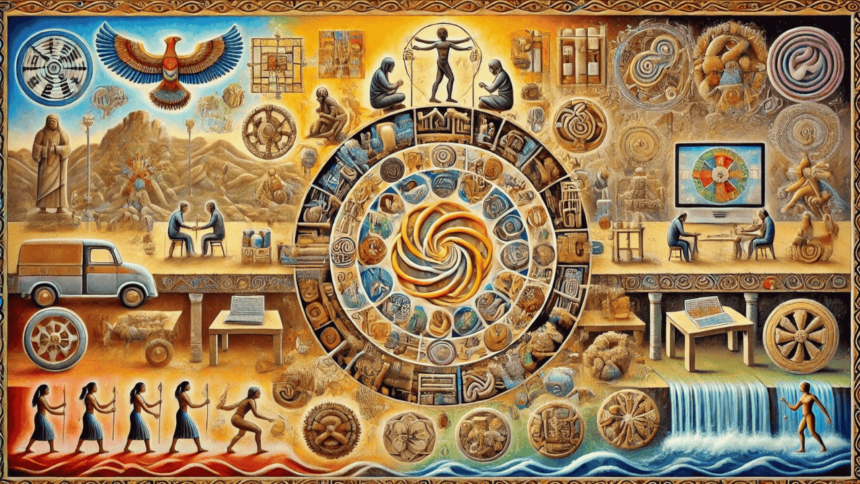The term “firuñais” encapsulates a rich tapestry of cultural, historical, and social significances that have evolved over centuries. Originating from ancient practices and finding its way into modern cultural expressions, the journey of “firuñais” offers a unique glimpse into the dynamic interplay between past and present. This article delves into the multifaceted aspects of “firuñais,” exploring its historical roots, cultural impacts, and contemporary relevance.
The Ancient Ritualistic Origins
“Firuñais” traces back to early cultural rituals where it played a pivotal role in communal and spiritual life. Employed in ceremonies to invoke protection and prosperity, “firuñais” was revered for its supposed healing qualities and its ability to foster well-being within communities. These ancient applications highlight the deep-seated beliefs and values that shaped the early uses of “firuñais,” reflecting its significance in the foundational cultural practices of various civilizations.
Cultural Journey through the Ages
As time progressed, “firuñais” transitioned into a symbol of artistic expression and social identity. Its themes and motifs inspired artists and writers, allowing them to explore complex societal issues and personal narratives through the lens of “firuñais.” The term’s adaptability ensured its relevance in various artistic domains, influencing literature, music, dance, and visual arts, thereby cementing its place in the cultural heritage of societies that embraced it.
Bridging Traditions and Contemporary Practices
In contemporary times, the significance of “firuñais” has not waned but has rather found new applications in mental health and wellness sectors. Therapists and counselors utilize its principles to aid clients in building resilience and managing stress, showcasing the term’s adaptability to modern needs. Furthermore, “firuñais” continues to influence the creative arts, serving as a source of inspiration for new generations of artists, writers, and performers.
The Role of Firuñais in Popular Media
Beyond its traditional and therapeutic roles, “firuñais” has made a notable impact in popular media. Its endearing charm and playful connotations have left an indelible mark on films, television, and digital content. Whether it’s portrayed as a loyal canine companion in narratives or used as a whimsical motif in various media formats, “firuñais” enhances creative narratives with its unique blend of warmth and affection.
The Enduring Legacy of Firuñais
The enduring appeal of “firuñais” is a testament to its ability to resonate across different epochs and cultural landscapes. Its capacity to adapt and remain relevant amidst changing societal norms and values highlights its profound impact on both historical and contemporary cultural practices. As we continue to explore and celebrate the legacy of “firuñais,” its role in fostering a deeper connection to our cultural roots and enhancing our modern lives remains clear.
Preserving Community Bonds Through Rituals
The application of “firuñais” extends beyond its historical and artistic influence into the realm of social practices and community rituals. In many cultures, “firuñais” has been integral in ceremonies that strengthen communal bonds and reinforce social cohesion. These rituals often serve as platforms for expressing communal identity and solidarity, illustrating the profound impact “firuñais” has on maintaining cultural continuity and fostering a sense of belonging among community members.
Educational Influence and Scholarly Interest
The role of “firuñais” in education and intellectual discourse is substantial. Scholars and academicians have explored its multifaceted aspects to glean insights into cultural transitions and historical narratives. Academic institutions often include studies of “firuñais” in their curricula to highlight its importance in understanding cultural dynamics and human societal development. This scholarly attention helps perpetuate the knowledge and appreciation of “firuñais” across generations, ensuring its legacy in educational contexts.
A Canvas of Cultural Expression
Artistically, “firuñais” has served as a canvas for expressing diverse cultural sentiments and stories. Artists around the world have adopted “firuñais” as a motif to explore themes of identity, migration, and transformation. The adaptability of “firuñais” allows it to be a recurrent theme in global art exhibitions, where it symbolizes the interconnectivity of cultures and the universal aspects of human experience.
Music and Dance: Echoes of Firuñais
In music and dance, “firuñais” resonates as a powerful metaphor for rhythm, harmony, and the human condition. Composers and choreographers have used “firuñais” to convey messages of resilience, heritage, and communal life, embedding these performances with a deeper cultural significance that transcends linguistic and geographical barriers.
FAQs About Firuñais
- What is the origin of the term “firuñais”?
- “Firuñais” originated from ancient cultural rituals and has evolved over time, with influences from various linguistic adaptations and societal changes.
- How has “firuñais” influenced modern culture?
- “Firuñais” influences modern culture through its applications in mental health, wellness, and the creative arts, demonstrating its adaptability and relevance.
- Can “firuñais” be found in contemporary media?
- Yes, “firuñais” appears in contemporary media, often portrayed in literature, film, and other creative expressions, enhancing narratives with its unique charm.
- What are the benefits of understanding the concept of “firuñais”?
- Understanding “firuñais” offers insights into cultural history, artistic expression, and social cohesion, enriching one’s appreciation of cultural heritage.
- Is “firuñais” relevant in today’s society?
- Absolutely, “firuñais” remains relevant by adapting to contemporary needs and continuing to inspire new generations in various cultural and therapeutic contexts.







